![Gifu Prefecture – March Trip to Hida Takayama and Shirakawa-go [Day 2]](https://static.gltjp.com/glt/data/article/12000/11800/20180413_160123_f5ff0da8_w1920.webp)
Gifu Prefecture – March Trip to Hida Takayama and Shirakawa-go [Day 2]
I visited Hida Takayama and Shirakawa-go in Gifu Prefecture in March over 3 days and 2 nights.
The area is great to visit in any season, but I decided to visit while the snow was still around this time.
In this article, I’ll be introducing my day 1 travels from Shinjuku to Shirakawa-go as well as my walk through Shirakawa-go.
This article will introduce Shirakawa-go in the morning on my 2nd day, as well as my walk through Takayama.
Dates of Visit: March 4th-6th, 2017
Early Morning Walk Through Shirakawa-go
I took a walk in the Kanmachi area south of Shirakawa-go before breakfast.




The clouds were a bit bigger than they were the day before.


Breakfast at Kidoya
I then returned to Kidoya for breakfast. It was a simple Japanese-style meal focused on showcasing local cuisine.


Grilled Magnolia Leaves with Miso
Hoba-miso, or grilled magnolia leaves with miso, is a local dish of the Hida Takayama region.
The miso is mixed with spices and mountain vegetables, then cooked on top of magnolia leaves. It’s then eaten with rice.
Photos of the Inside of Kidoya




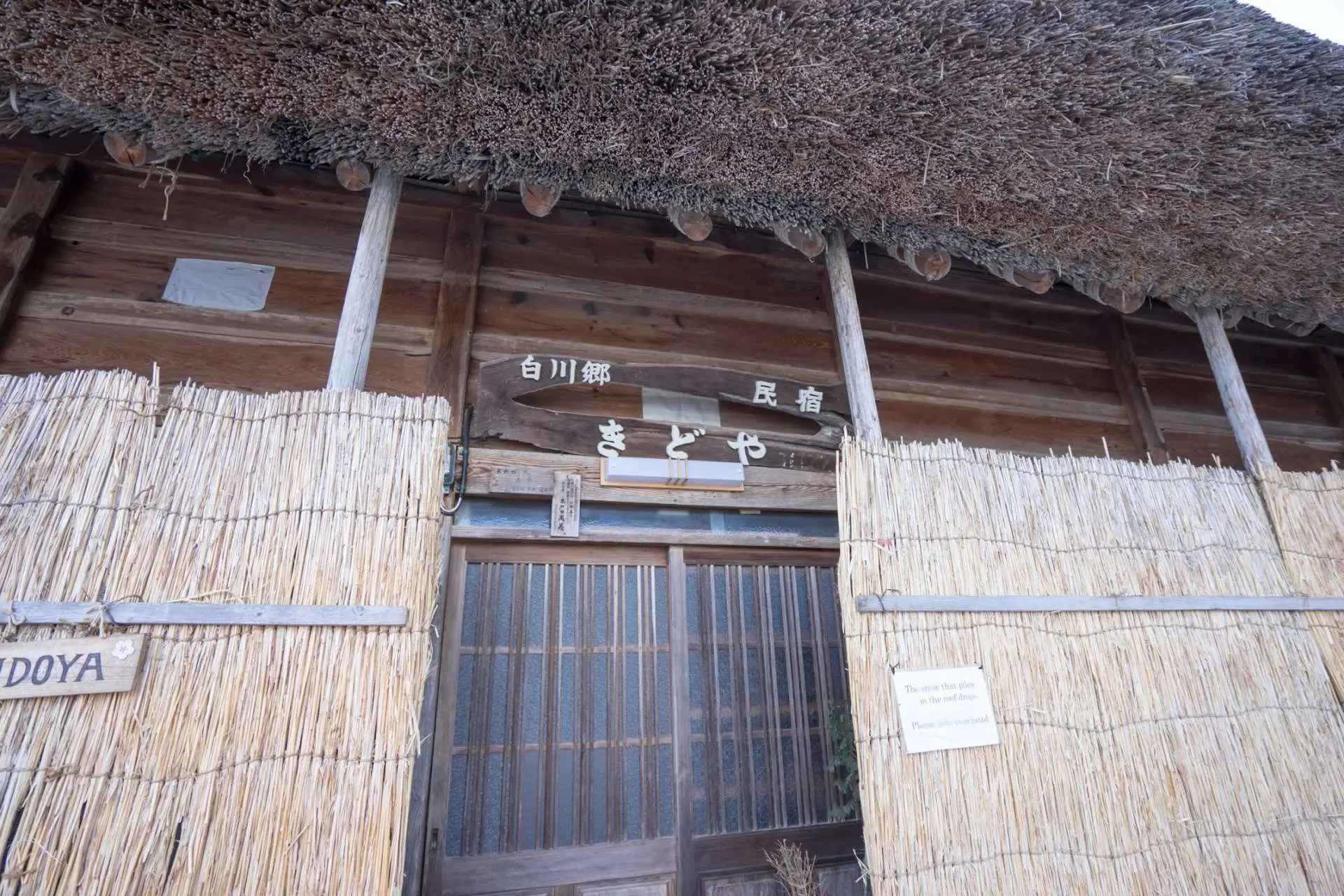
My Thoughts on Kidoya
When I stayed here, most of the guests were foreign tourists, but I think the hostess at Kidoya spoke a little bit of English.
There aren’t any particularly luxurious amenities, but the rooms are clean and the meals were delicious and filling.
My 1-night-stay, which included 2 meals as well as a heating fee since it was wintertime, came out to about 9,000 yen, which I think was pretty cheap.
Kidoya is located right in the middle of Shirakawa-go. You can go north to the observation deck or south to the town area without any trouble, so its location makes it great for sightseeing.
(Depending on the season, the cost and available services may vary)
Find a Booking Site for Gassho-zukuri Lodging Here
One Last Walk Around Shirakawa-go
I took some more pictures while I made my way to the bus stop.
















Summary of Sightseeing in Shirakawa-go
I heard that Shirakawa-go is beautiful to visit in any season, but everything really was gorgeous.
I wasn’t visiting on a designated light-up day, but I was lucky enough to have blue skies and be able to take some gorgeous pictures. I really wanted some photos of snowy Shirakawa-go!
I think I’ll visit again in the spring or fall.
Traveling from Shirakawa-go to Takayama
I went back to Hida Takayama, which I’d gone through the day before, by bus.
Greeted by Hida Local Folk Craft “Sarubobo”
Sarubobo are made to look like baby monkeys.
They’re protective charms that are shaped like dolls, and they serve purposes like dispelling calamity, dispelling plagues, finding a suitable spouse, and ensuring safe childbirth.
Faces aren’t drawn on sarubobo because “by not including a face, they’ll always be showing the same feelings as you are.”

I dropped off my luggage at my hotel and started walking around.
Hida Kokubunji Temple

My first stop was Hida Kokubuji Temple.
Supposedly it was built around 757.

I’ve visited Hida Kokubuji Temple before, but I wanted to see this three-storied pagoda again.
Local Gourmet Meal “Takayama Ramen”
This amazing local dish, Takayama ramen, is a chicken-based ramen that’s sometimes called Hida ramen. It’s become incredibly popular lately due to being eaten by the main character in the film “Kimi no Na Wa (Your Name).”
Tsuzumi Soba

I had my lunch at Tsuzumi Soba near Hida Kokubuji Shrine.
Tsuzumi Soba is a well-established restaurant that opened in 1956.
It’s also frequently featured in guidebooks and other media as a great restaurant for getting a taste of Takayama ramen.


The broth is a simple and light mix of chicken stock and soy sauce. The noodles are super-fine crimped noodles.
Tsuzumi Soba
- Address
- 52 Asahicho, Takayama City, Gifu
- Access
- 7 minutes on foot from Takayama Station
- Tel
- 0577-32-0299
- Business Hours
-
11:30 am - 2:00 pm, 5:00 pm - 10:00 pm
Sunday: 11:00 am - 3:00 pm
※Restaurant closes once out of soup - Closed
- Tuesdays (Open on National Holidays)
The Only Remaining Edo-Period Prefectural Government Office in Japan – Takayama Jinya
Next I went to Takayama Jinya, one of the most iconic sightseeing spots in Takayama.
Jinya were administrative headquarters for politics of the Edo period (from 1603 to 1868), and their present-day equivalent would be government administration offices.



This was a government official’s office.

There was also a lovely inner garden in the housing area where the prefectural governors lived.


This hall was used for meetings and the like. It’s made of three connecting rooms and is measured at 49 tatami mats.

The oshirasu, or courtroom, is the room where investigations and trials took place.
Criminals were supposedly seated on the notched platform in the center of this picture, and a stone weighing about 40kg was placed on their knees.

Takayama Jinya is packed with things to see!
Takayama Jinya
- Address
- 1-5 Hachiken-machi, Takayama City, Gifu
- Access
- 10 minutes on foot from Takayama Station
- Tel
- 0577-32-0643
- Business Hours
- 8:45 am - 5:00 pm (November to February 8:45 am - 4:30 pm, August 8:45 am - 6:00 pm)
- Closed
- 29,31 December and 1 January
- Admission
- 430 yen (Free for ages up to high school students)
- URL(English)
- http://www.pref.gifu.lg.jp/foreign-languages/English/tourism/takayama/
The Symbol of Takayama, Nakabashi Bridge

Nakabashi Bridge is an indispensable part of sightseeing in Takayama.
The bright vermillion bridge is extremely photogenic.



Tourists had stopped walking and were enjoying their view.

Walking Down the Old Neighborhood Sanmachi
Sanmachi is a super-popular old area in the center of Takayama that still brims with Edo Period atmosphere.
It was designated as an Important Traditional Architecture Conservation Area in 1979.


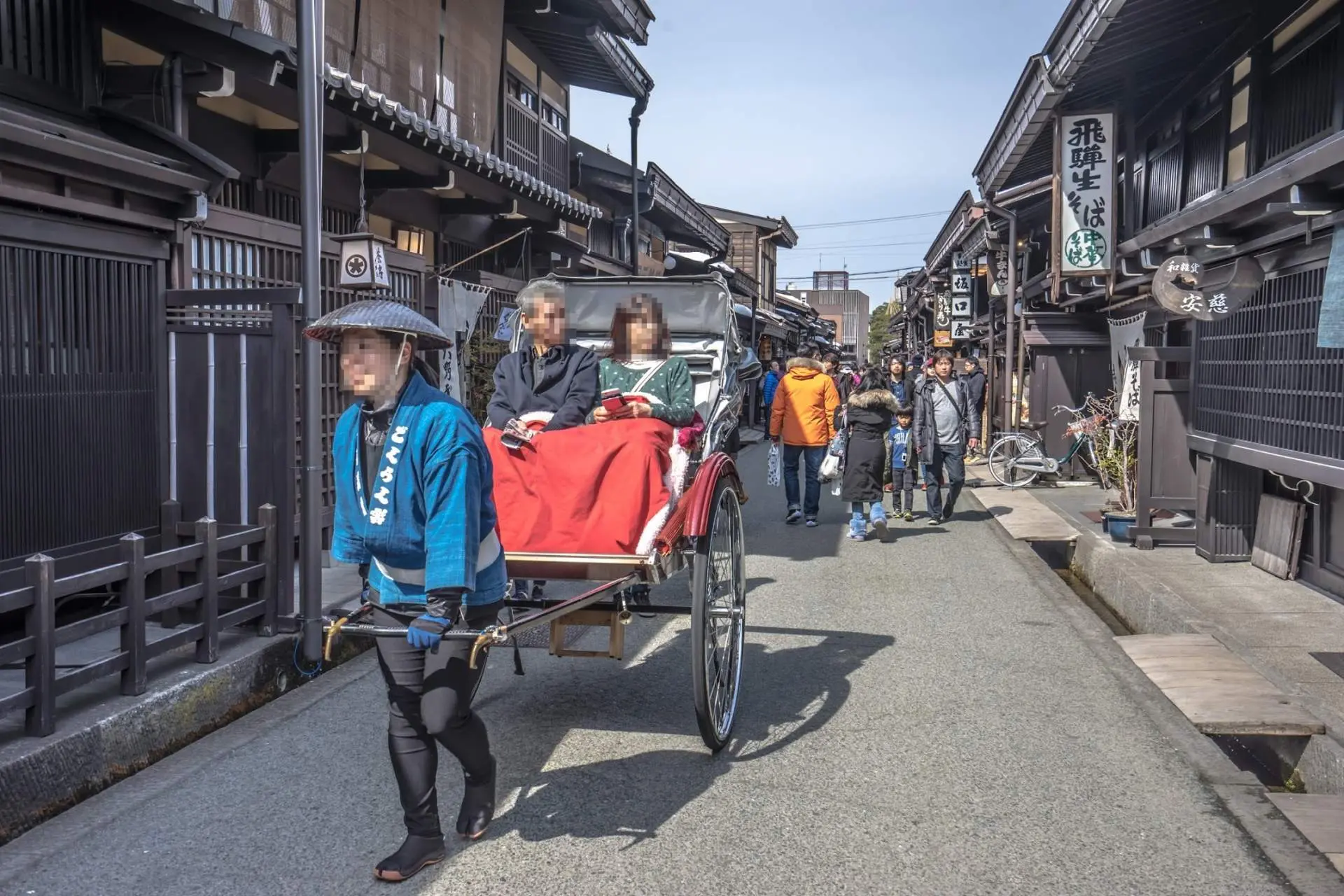

Restaurant Sakaguchiya
This restaurant offers Hida beef nigiri sushi that you can order as takeout. There was a huge line outside.

“Kotte Ushi,” located across from Sakaguchiya, also sells Hida beef nigiri sushi.
There was a huge line there too.

Sanmachi is always packed with lots of tourists.




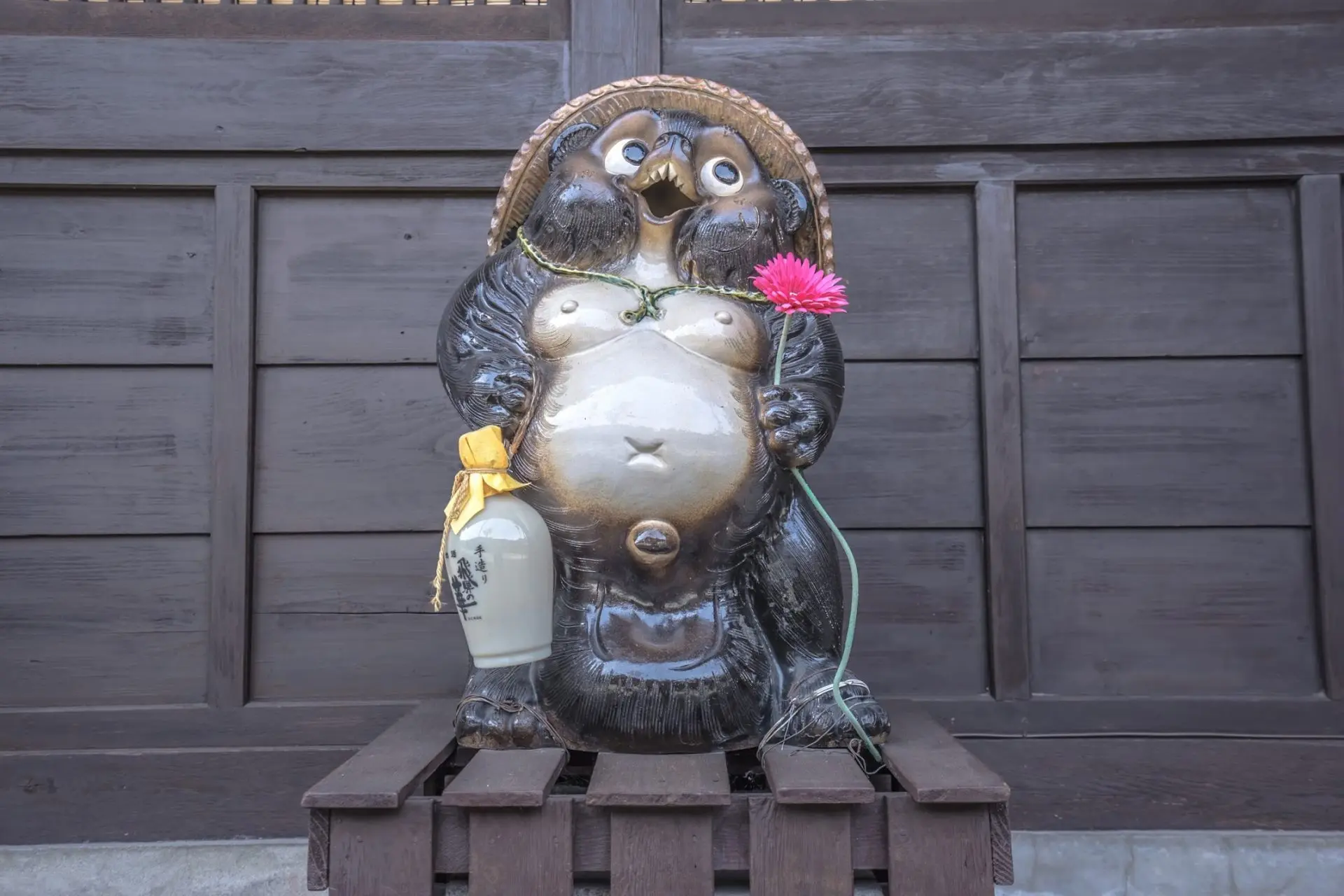
Heading to Sakurayama Hachimangu Shrine, the Stage of the Autumn Yahata Matsuri Takayama Matsuri
The spring “Sannou Matsuri” and autumn “Yahata Matsuri,” otherwise known as “Takayama Matsuri,” was registered as a UNESCO Intangible Cultural Heritage in 2016 along with other festivals from across Japan.
This is one of Japan’s three major festivals and has around 400 years of history, and during the festival there are plenty of luxurious stalls and mechanical dolls to enjoy.

Since I came all the way out to Takayama, I went to check out the area where the festival takes place.
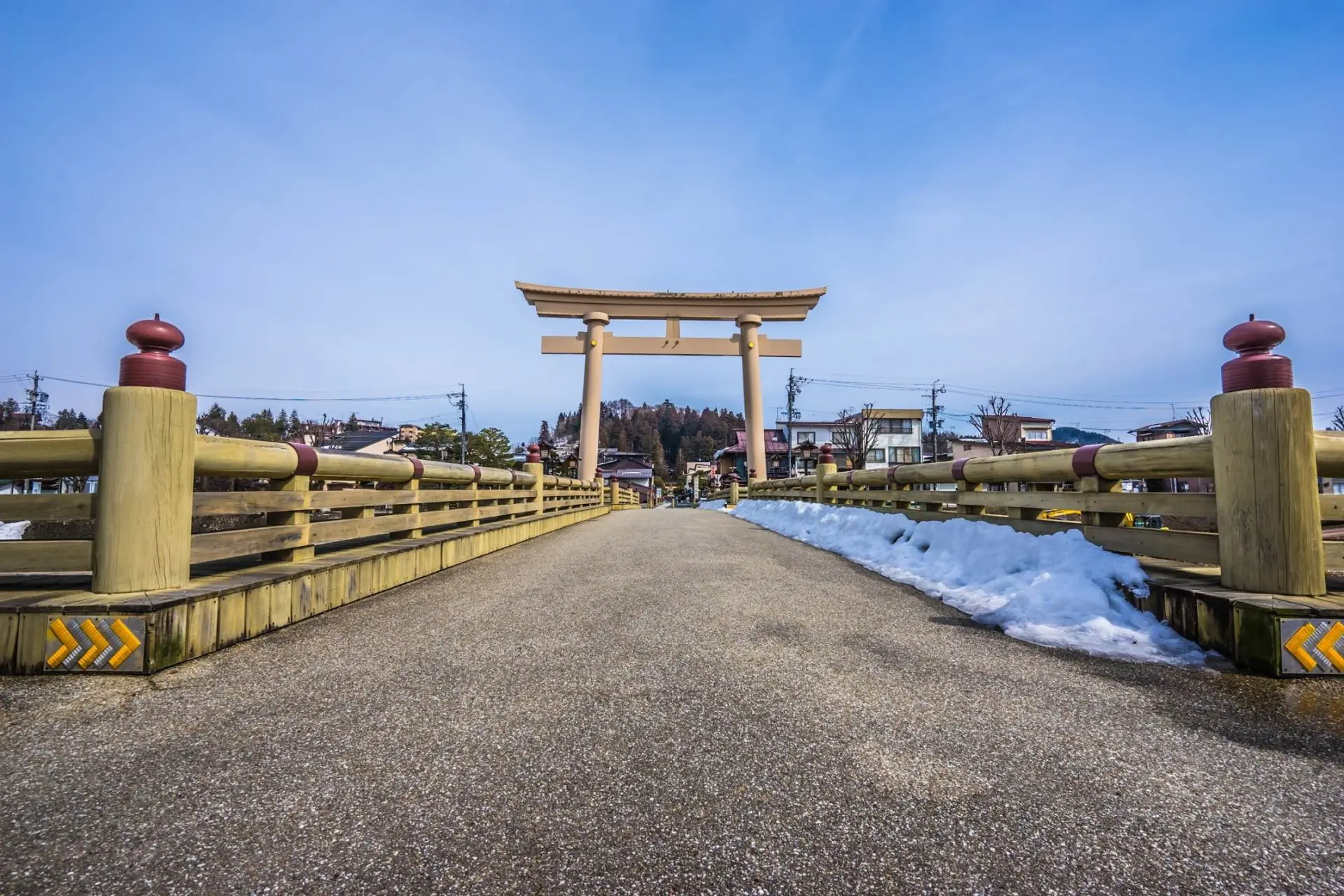


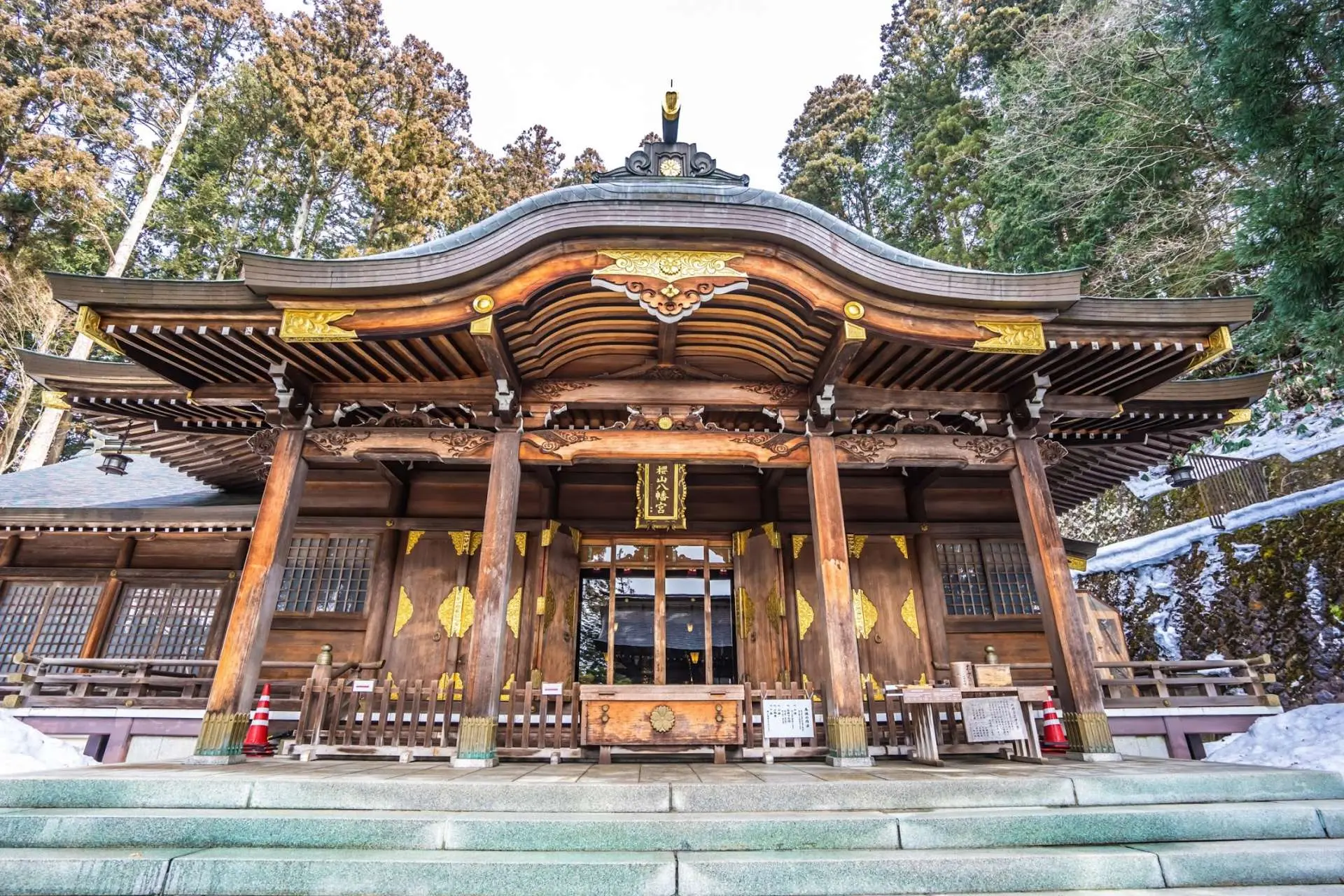

There was still some snow in the shrine grounds.

Sakurayama Hachimangu Shrine
- Address
- 178 Sakuramachi, Takayama City, Gifu
- Access
- 20 minutes on foot from Takayama Station
- Tel
- 0577-32-0240
- Hours of Worship
- 24 hours a day
- Admission
- Free
- URL(English)
- http://www.hidahachimangu.jp/english/index.html
This is the street that has the Yoshijima Heritage House and Kusakabe Folk Museum, which were both previously used as residences for wealthy merchant families.
These are must-see places if you’re interested in architecture.



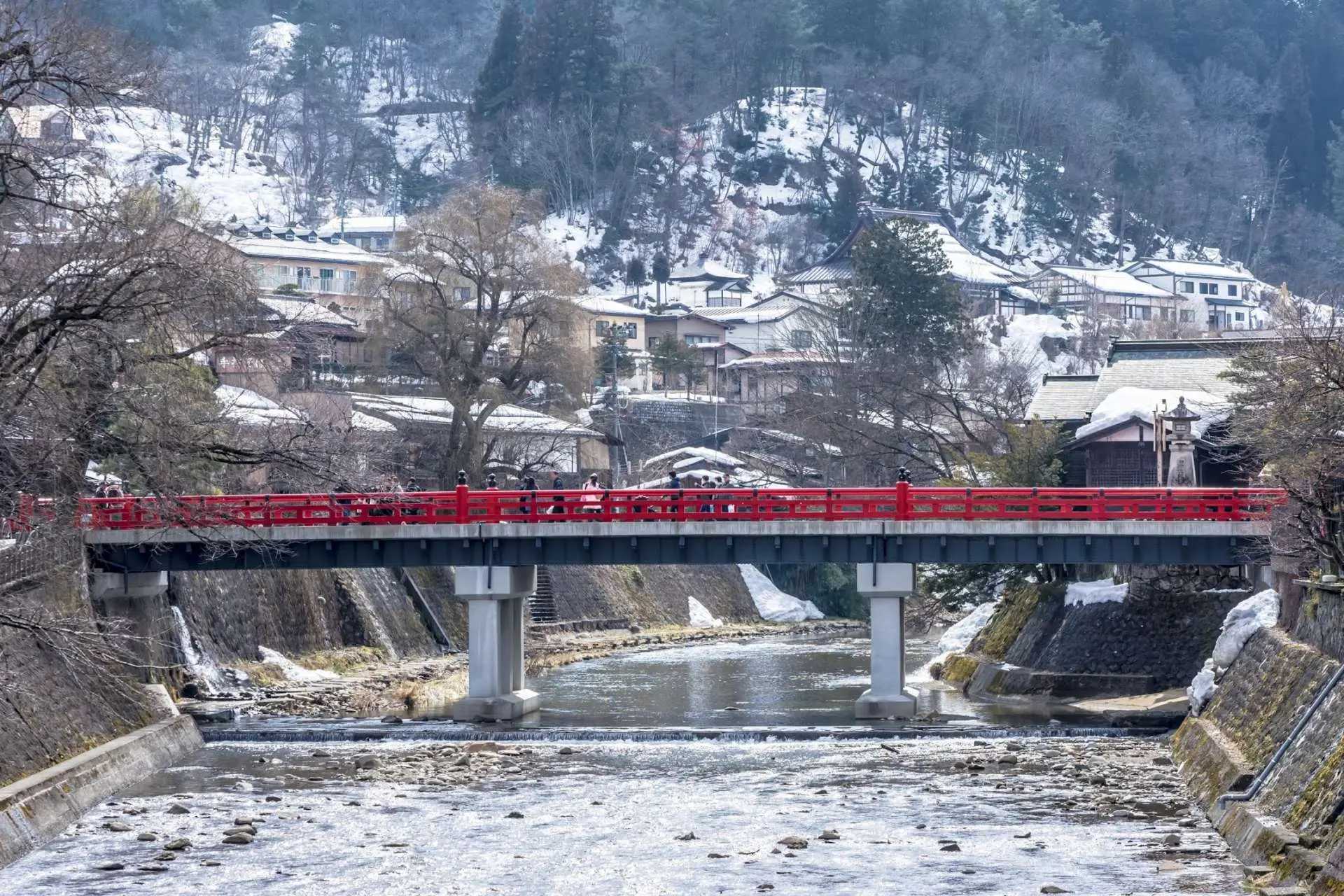
Hida Art Café “Baren”
I took a short break at this café near Nakabashi Bridge.

This small gallery café has woodcut prints by local artists on display.





I looked out at the street view from the lattice doors on the 2nd floor.
Baren
- Address
- 107 Kami3-machi, Takayama City, Gifu
- Access
- 10 minutes on foot from JR Takayama Station
- Tel
- 0577-33-9201
- Business Hours
- 8:30 am - 5:00 pm (9:00am-4:30pm during winter)
- Closed
- Irregular holidays (Closed Tuesdays from December through March)
Snaps of Sanmachi




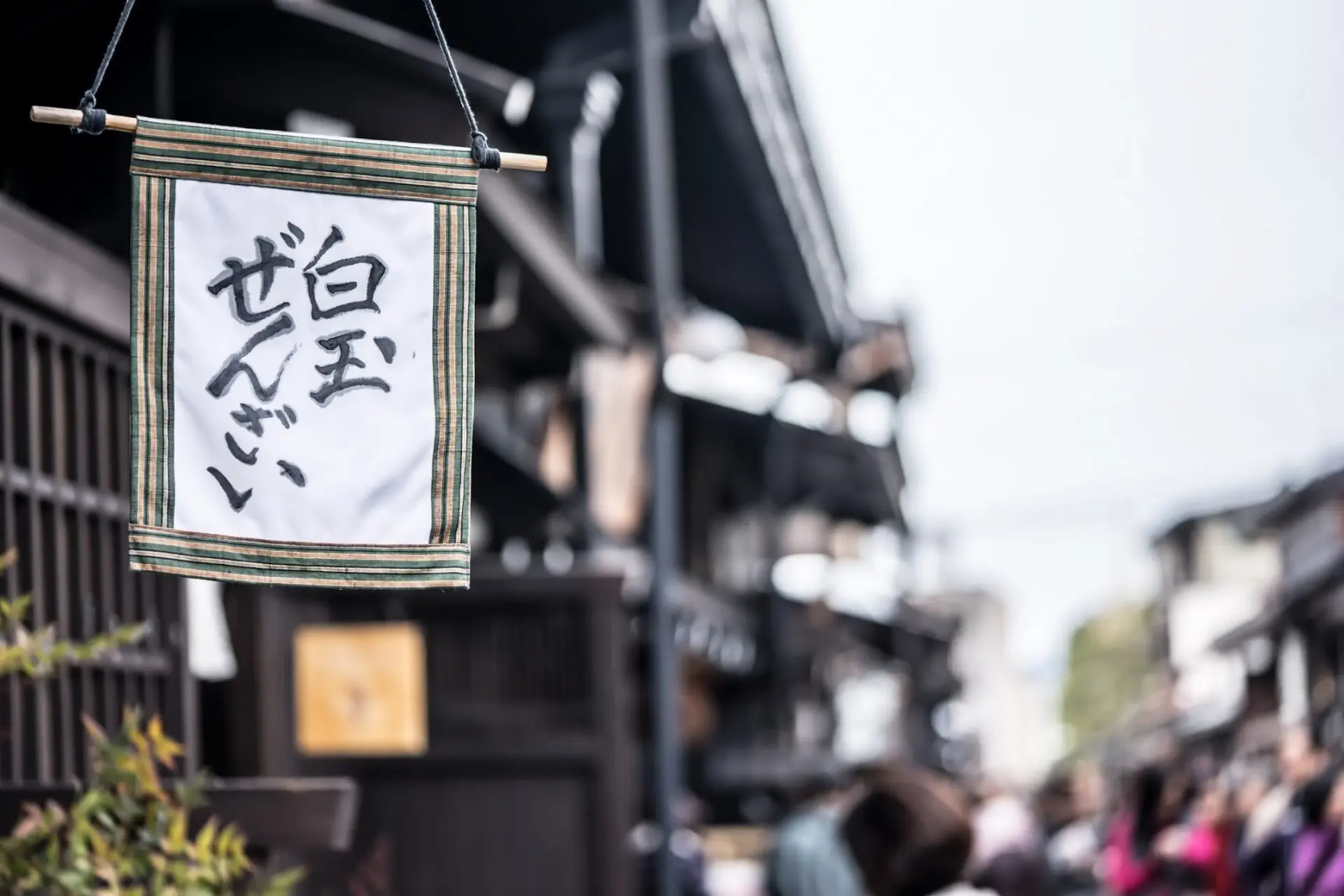




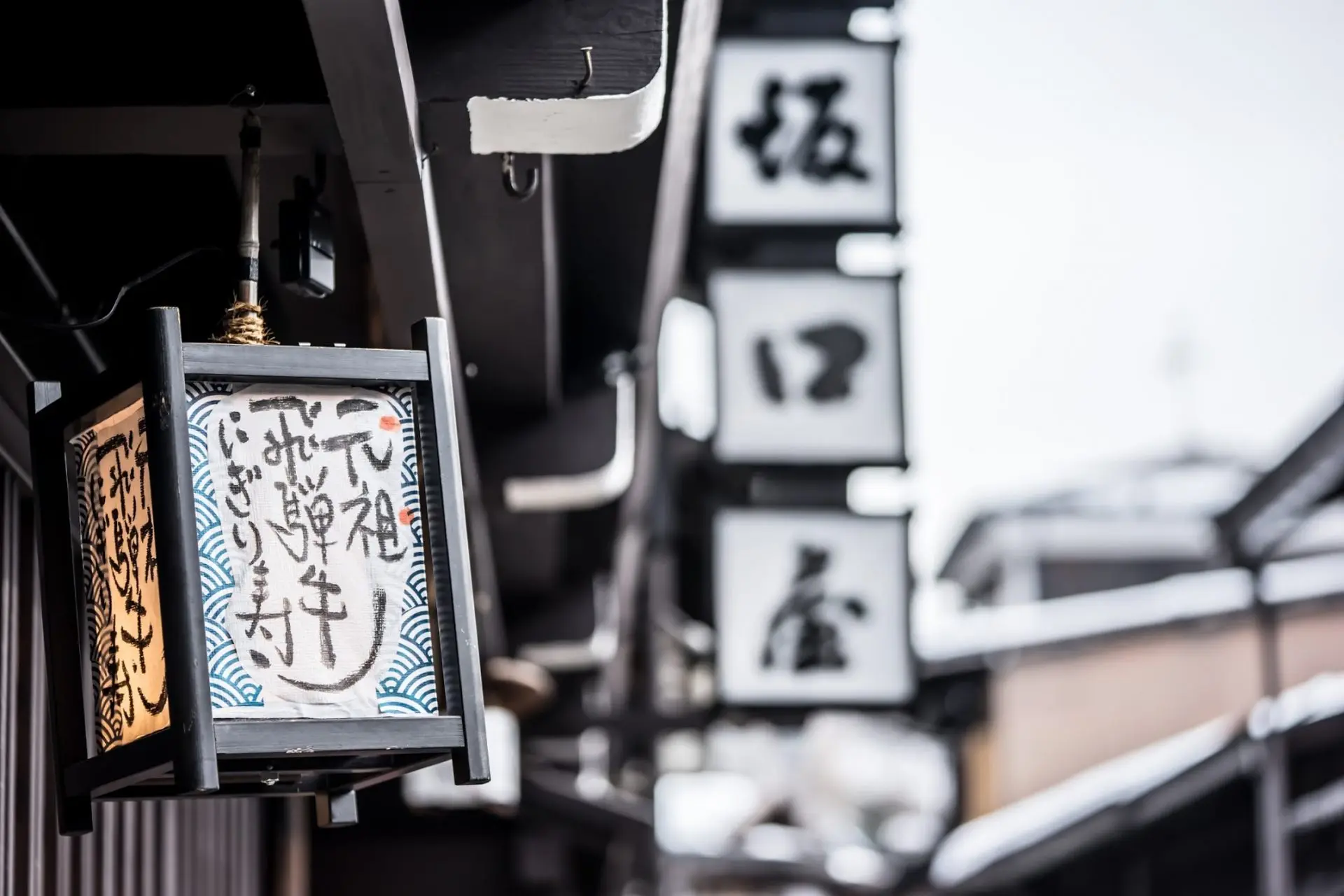

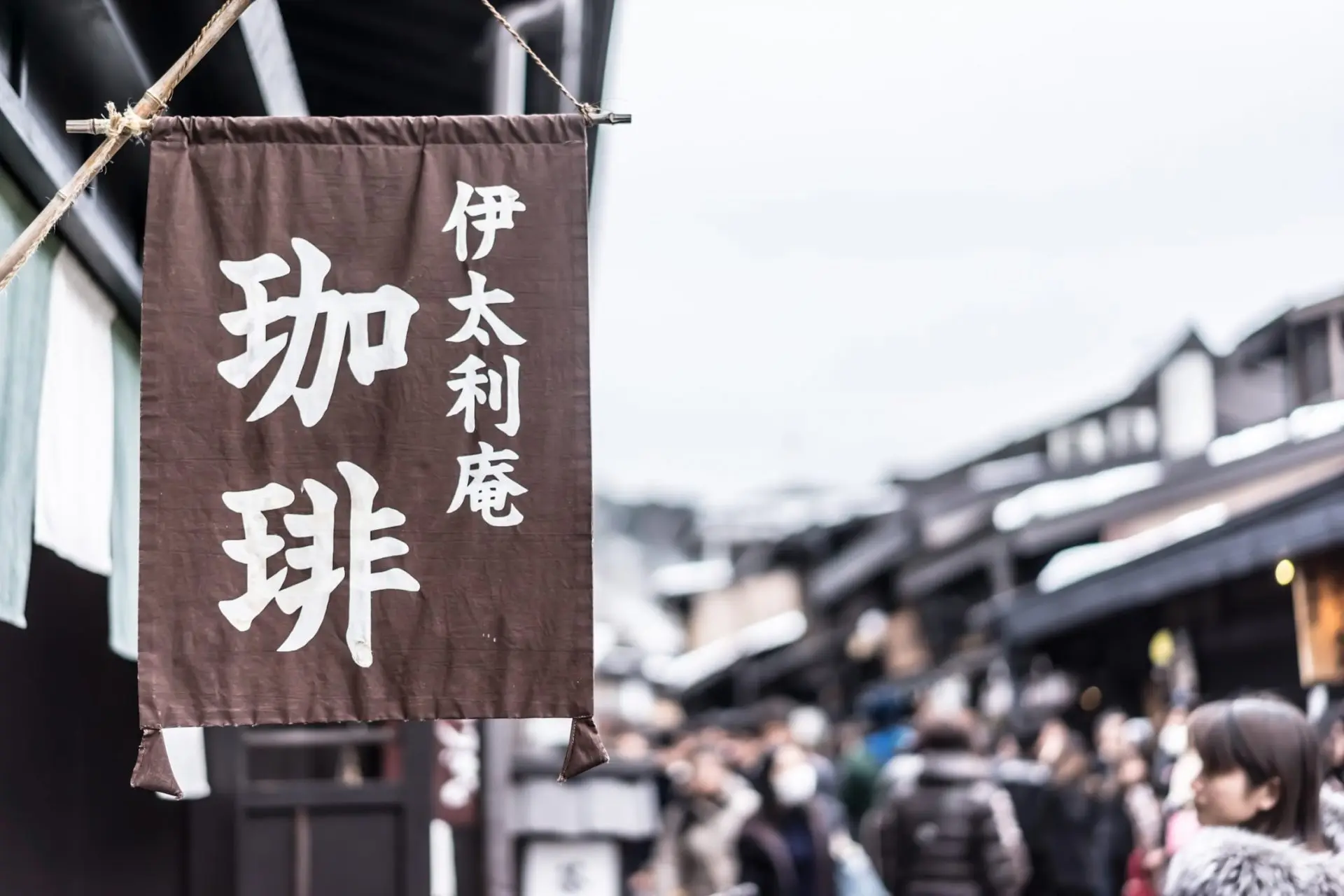


Hida Beef Steak at Kitchen Hida
Since I came all the way to Takayama, I definitely wanted to have Hida beef at least once!
My choice for dinner out of several restaurants was “Kitchen Hida.”

Kitchen Hida is a steakhouse in Sanmachi.

It’s an old-fashioned steakhouse, and it had an easy-to-approach atmosphere to it.

This corn soup was made using Hida beef bouillon.

A sirloin or rib roast may be the best way to enjoy Hide beef’s characteristic melt-in-your-mouth marbling, but since I’m pretty conscious about my build, I went for the less-fatty fillet.
However, as they only serve A5-grade Hida beef, I was able to savor the tenderness of the beef even having ordered a fillet.
Kitchen Hida
- Address
- 1-66 Honmachi, Takayama City, Gifu
- Access
- 9 minutes on foot from JR Takayama Station
- Tel
- 0577-36-2911
- Business Hours
- 11:30 am - 3:30 pm, 5:00 pm - 8:30 pm,
- Closed
- Wednesdays
- URL(English)
- http://www.kitchenhida.com/english/
Evening View of Sanmachi
After dinner, I took another walk around Sanmachi.



Most of the shops had already closed by this time.
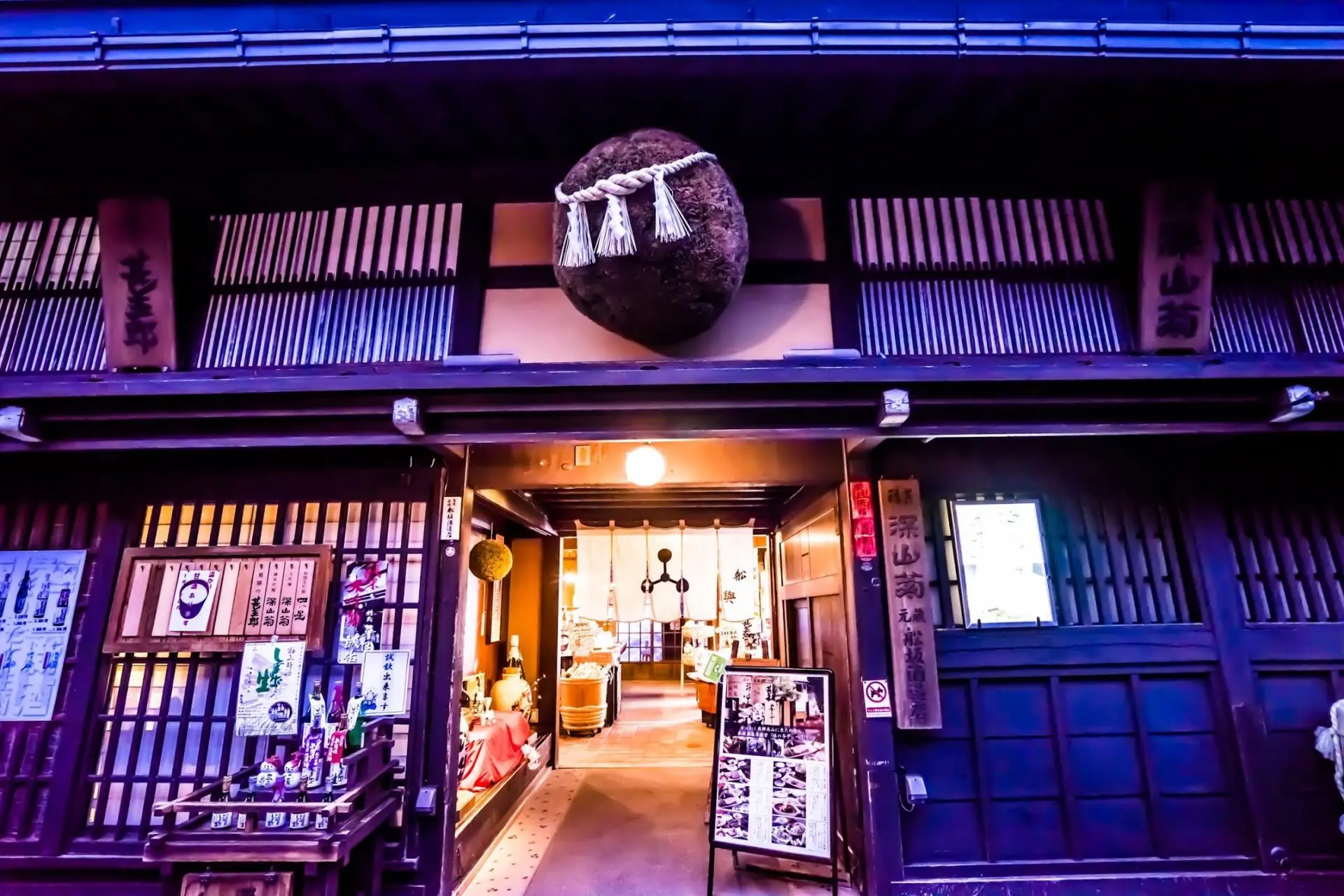



This is a local regional bank, the Takayama branch of Juroku Bank.
As the office was built in 2016, it looked very modern.





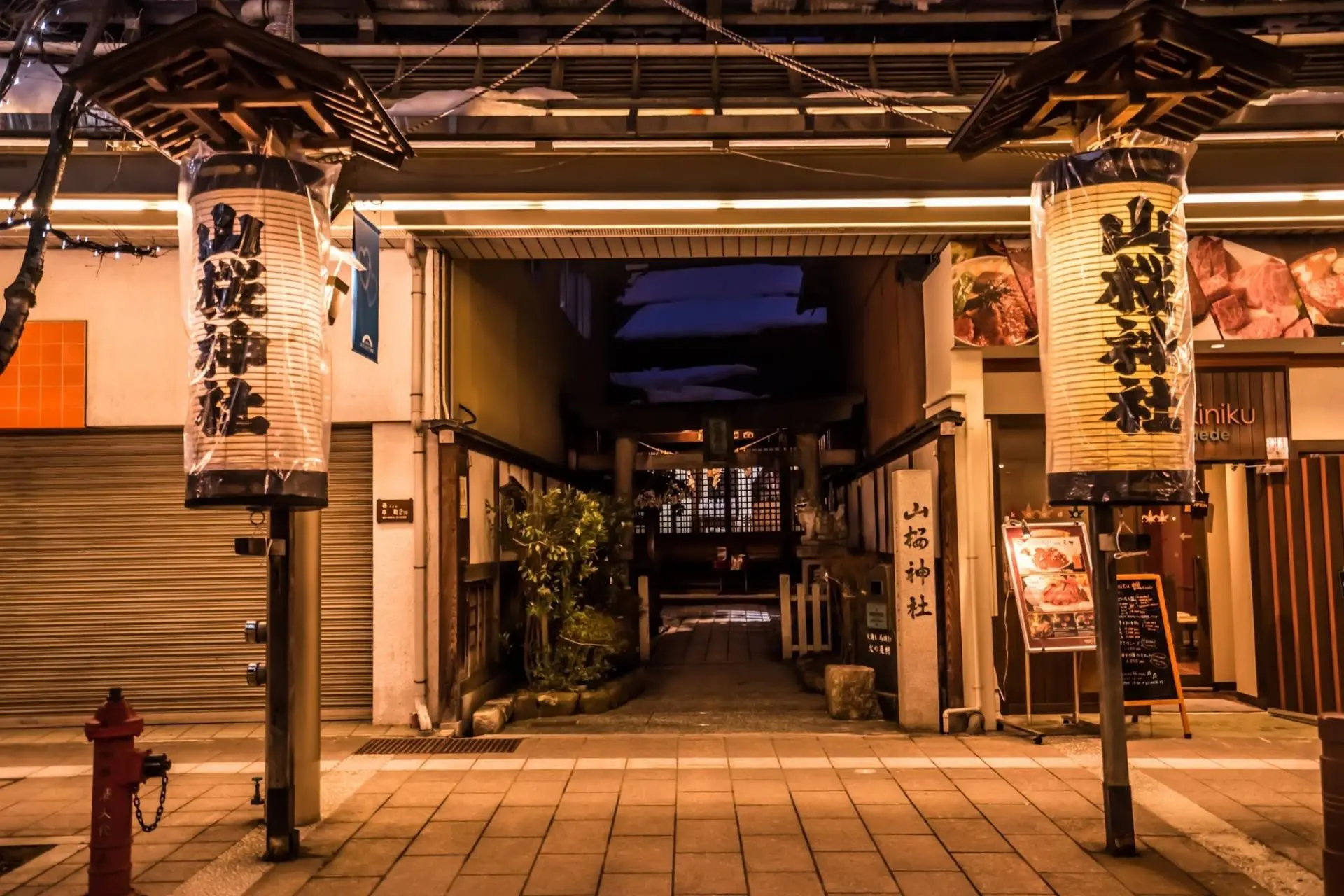



Night View of Sanmachi
It’s so quiet at this hour that you wouldn’t believe how active it was earlier in the day.







How did you like the streets of Takayama, sometimes called the “Little Kyoto of Hida”?
All of the best sightseeing spots in Takayama are gathered together here, making it easy to sightsee in the area.
The 3rd article in this series will introduce a view of Takayama’s morning market and “Hida Furukawa,” the setting used in the movie “Kimi no Na Wa (Your Name).”
Author
Birth place: Tokyo
Kosu
While living outside of Japan for a while, I began appreciating what Japan has to offer.

